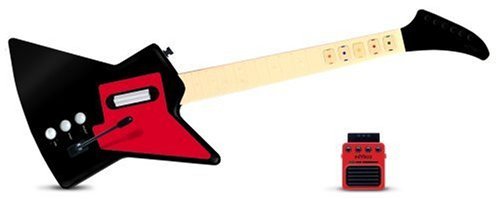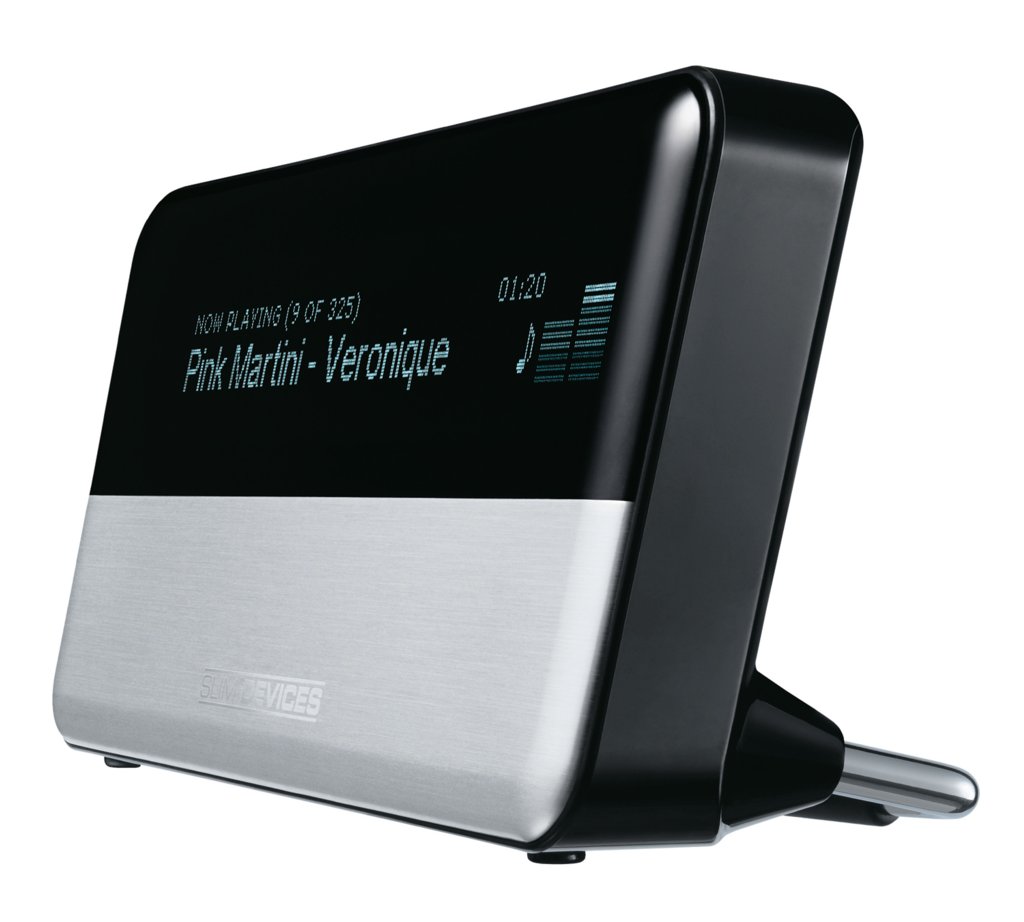In the age of rocking out from the comfort of your own couch, many an armchair rocker have been hindered by their pesky cord stopping them from doing a wicked awesome power slide on the final note of their favorite song. Along comes the wireless controller. Fans Rejoice. Power slides are now performed in mass quantity. But trouble looms on the horizon. The functionality of many of the wireless controllers is questioned. Why is there no notch on the yellow button, and why do the buttons feel so different? Why does it feel so much smaller? Why do I have to keep replacing batteries? Why does it feel like the noted I used to be able to hit suddenly miss? NYKO seemed to have been listening to the cries of the masses, and have responded by introducing the next generation of wireless axe: The FrontMan Wireless Guitar.
Immediately I was impressed by the size and weight of this guitar. It looked and felt very similar to the PS2 guitar that I was so used to. I popped I the batteries and fired up Guitar Hero II to test it out. Syncing the guitar to the controller port counterpart is a breeze; just a quick button press on each and it is good to go. After playing a few songs I was impressed by the responsiveness of the unit, it seemed to be as on time as the wired version, a flaw I have noticed in a few of the other aftermarket guitars out there. The strumming feels good, the whammy bar works just like it should, and the buttons feel just like the factory unit. The best part was being able to orient my hand with the notch on the yellow button. The other wireless guitar I have has no such notch, and I constantly find myself a note off and playing terribly.
With playability checked out, I took a look at the functionality of the guitar. One of the best features of the whole guitar and what may make it a buying point over any other guitar is the fact that the guitar can recharge batteries when plugged into the USB port. One set of batteries can now last as long as the guitar does. The USB cord even powers the guitar if you run out of batteries, which is a very nice plus if you find yourself out of juice.
For aftermarket guitars, it simply does not get better than the NYKO. The capacity to recharge batteries, 2.4 GHz range, excellent playability, and a very competitive price all make up for one sweet guitar. So shred away, ye rockers of yon living room, shred away.
Second Opinion
by: Erich Becker
I agree with everything John has stated in his review. The wireless controller has long been the desire, and scourge of the armchair rocker because if a first party company doesn’t release it, the third parties have never been able to get it exactly right. There’s usually some short coming that holds back a great product from being truly perfect. The FrontMan does have a few problems in my eyes, I found the buttons to be a bit stiffer than the guitar packaged in the original Guitar Hero for the PlayStation2. And for some reason the strum button didn’t feel quite right moving over from the RedOctane guitar, but after getting used to it, and rocking out for hours on end, the NYKO guitar feels natural in your hands.



